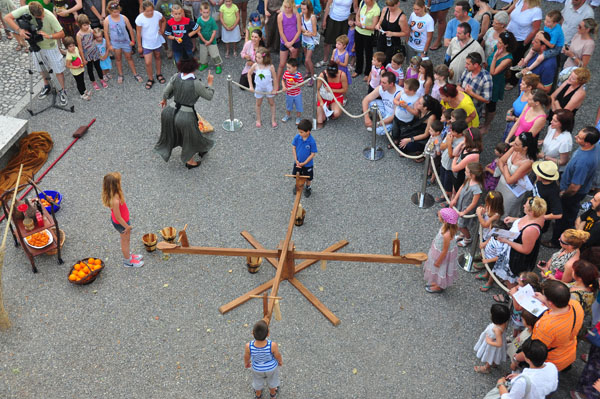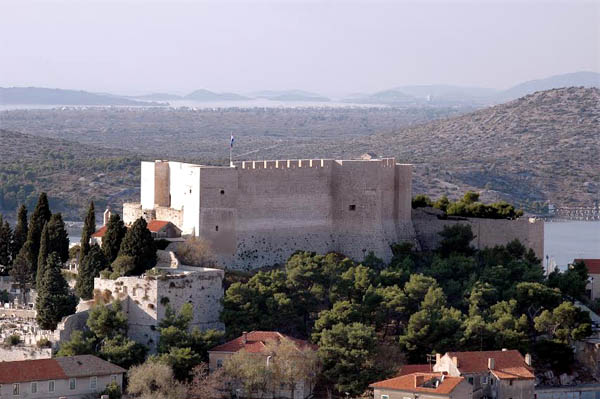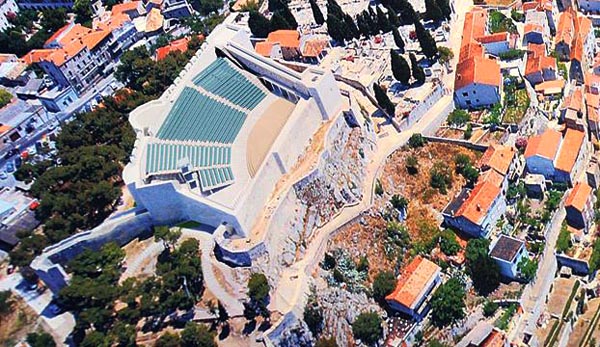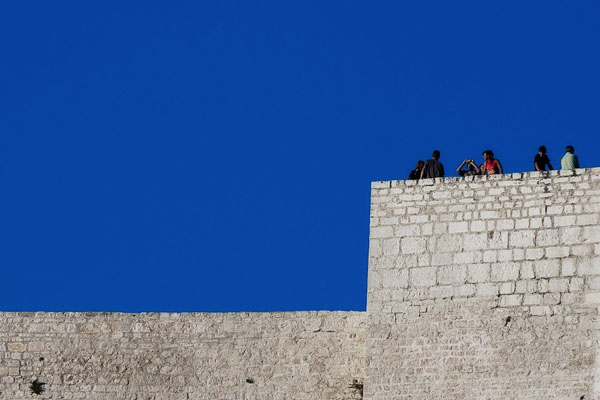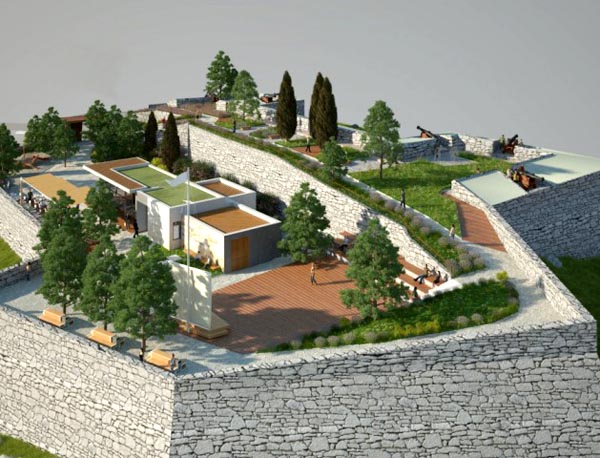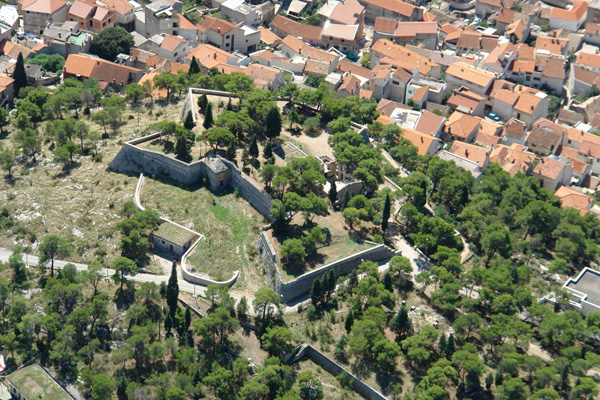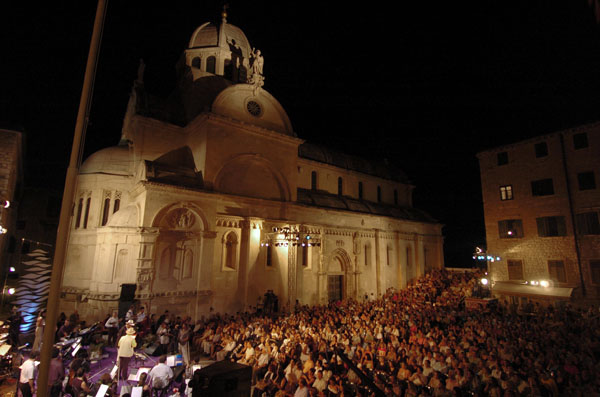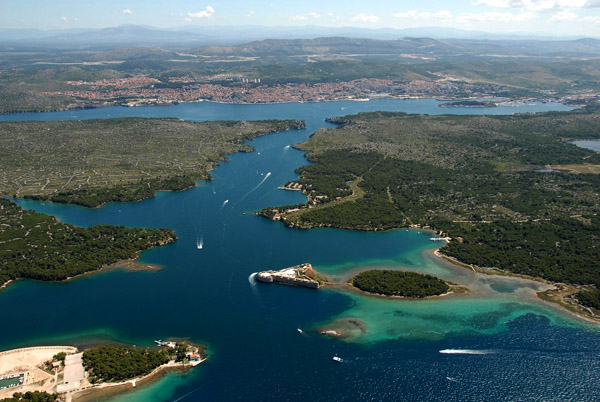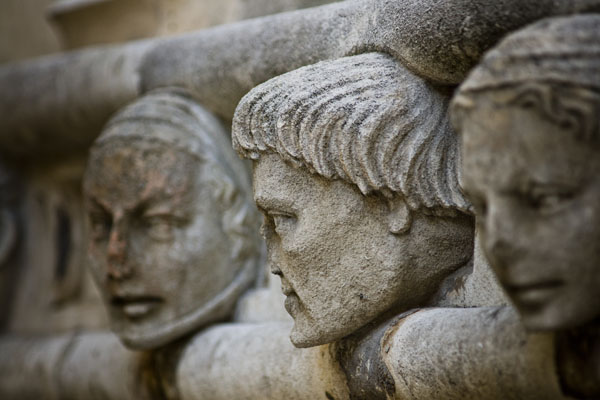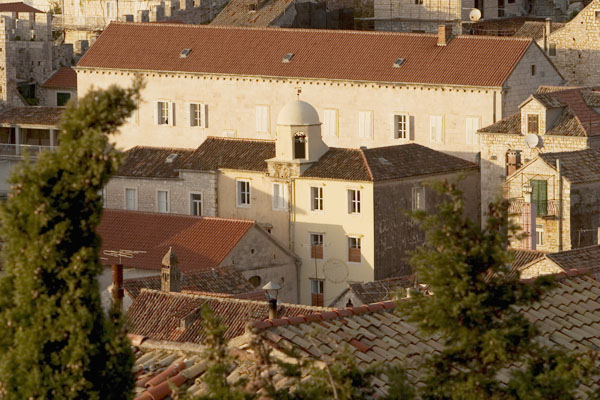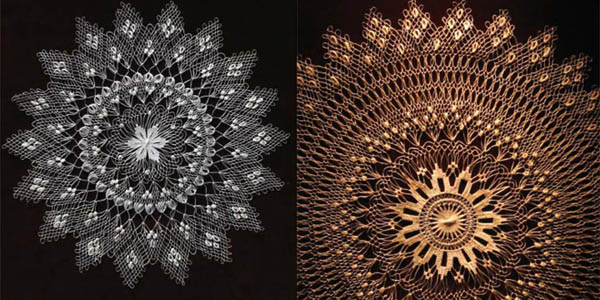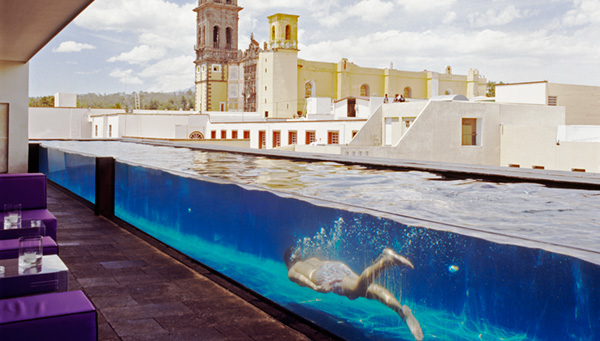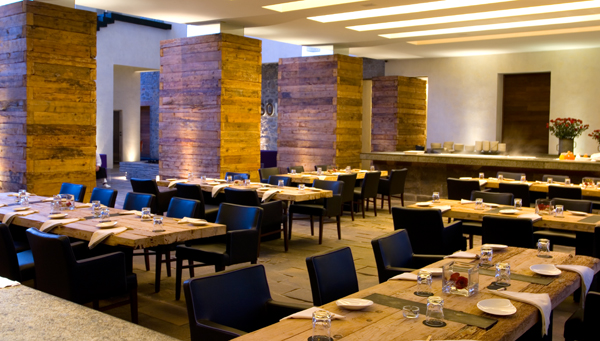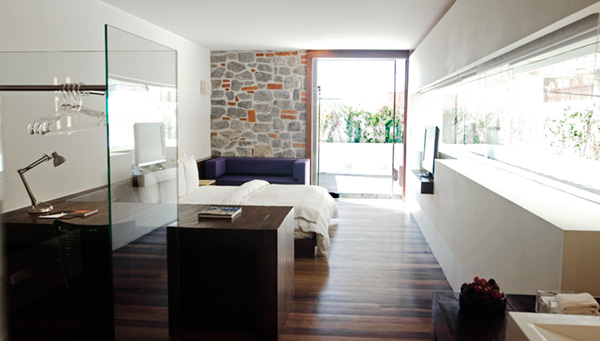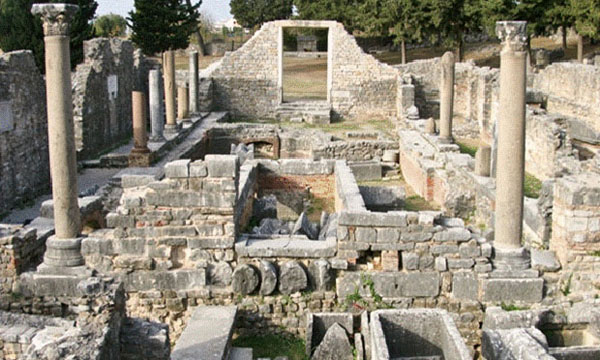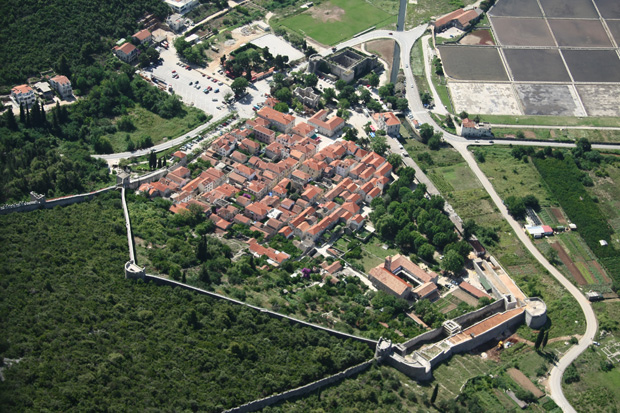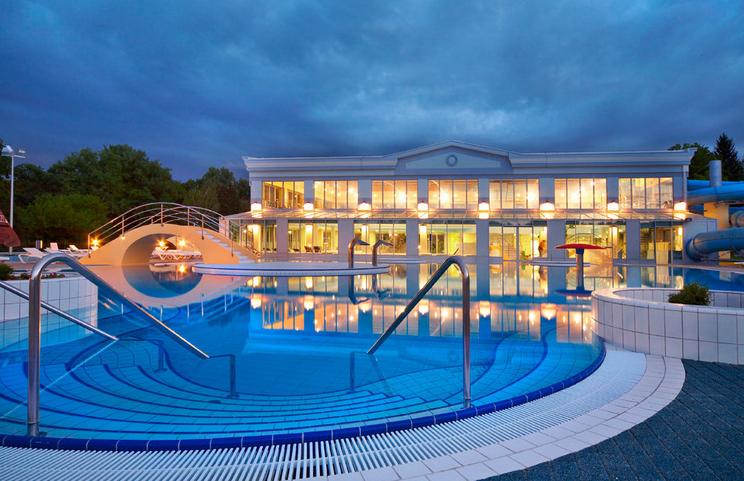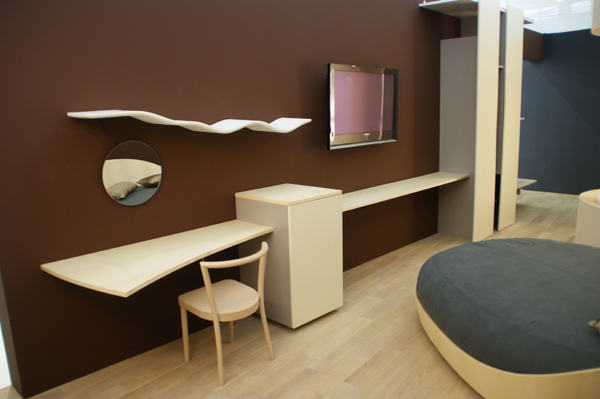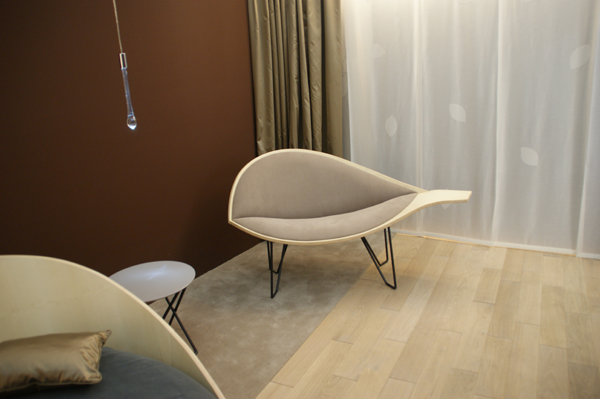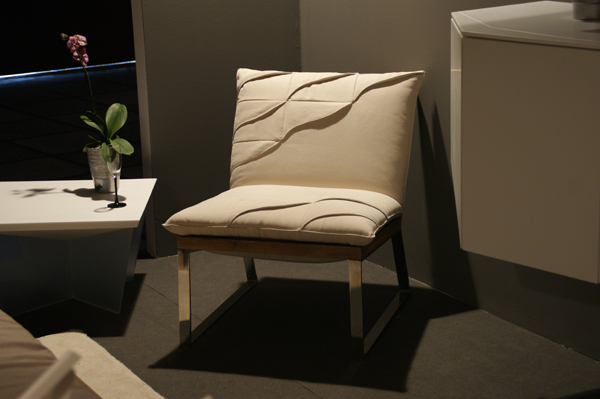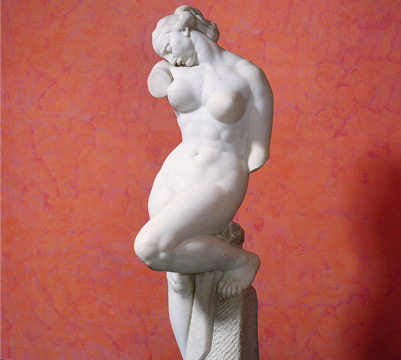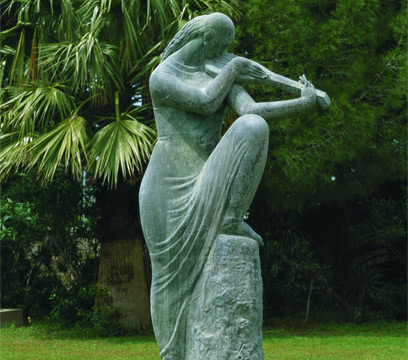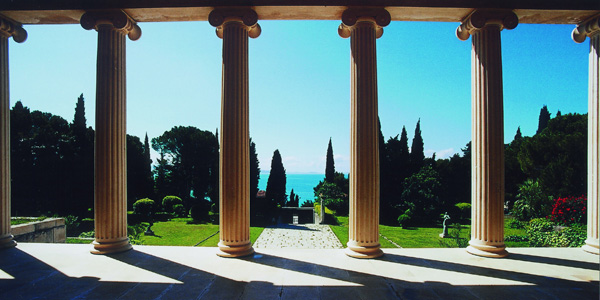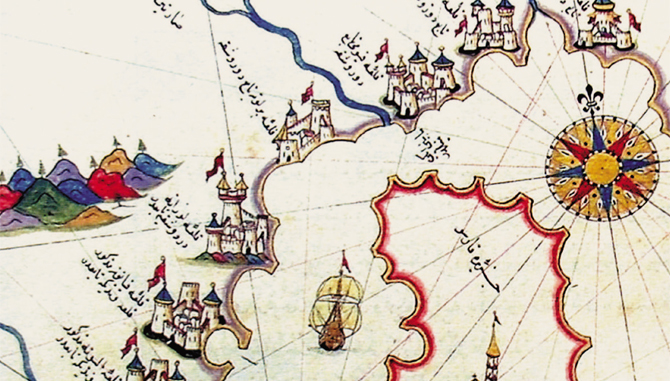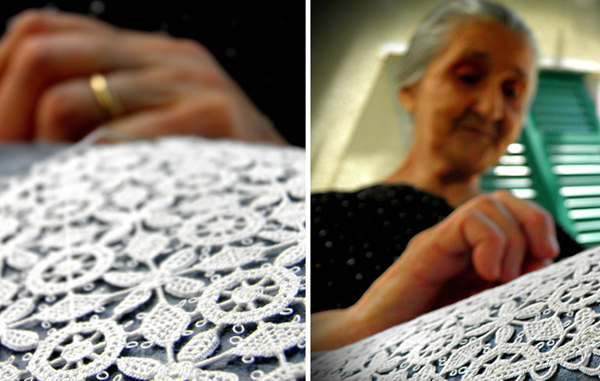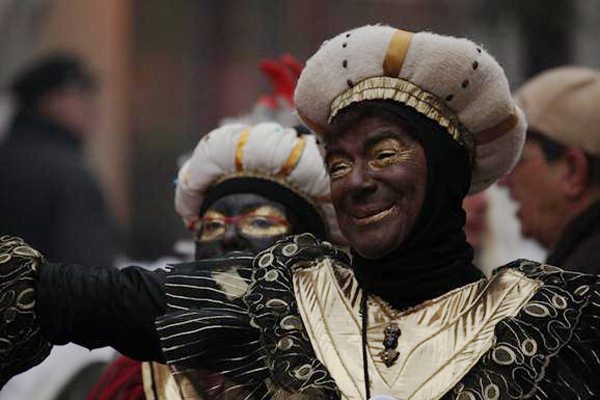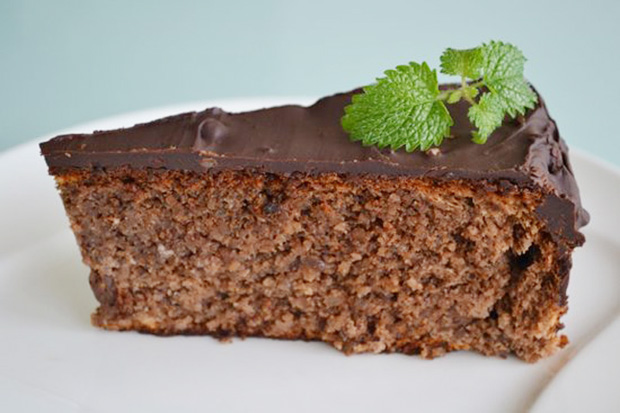The world is admired by these fortresses!
Ancient heritage in new attire.
Visit Šibenik – the city of fortresses
The beauty and the value of Croatian historical heritage, and cultural wealth of the Šibenik city has been long recognized by the world. But, what particularly arouse great interest of the public is the beauty and the size of Šibenik’s forts. St Nicholas fort is one of the four that dominate Šibenik (St. Nicholas’, St. Michael’s, St. John’s and Šubićevac). All fortresses are being used to promote cultural tourism of the entire Šibenik region.

The fort of St. Nicholas is situated on the entrance of St. Anton’s Channel, on the place where monastery of St. Nicholas used to be. The fort was built in the 16th century, during the Venetian rule, fas a defence system from Turkish attacks from the sea.
St. Michael’s fort is a kind of centre of Šibenik, a place where the oldest evidence of civilisation on Šibenik’s area was found. For a long time the fort was under the military management, and has only recently been opened for public. Many locals call it St. Anna fort even today, after the graveyard at the foot of the walls.
At the moment the restoration, funded by EU funds and Šibenik City, is being finished, so according to the information given by the city authorities, it will come to life in the summer of 2014, as an open stage.
The project includes setting up the summer stage in the open and subterranean part of the fort where polyvalent hall and the adjacent rooms will be situated.
The fort of St. John in situated on the 115 metres high hill, above the old city core. It was built in star-like shape in 1646, as a project of Venetian military engineer Antonio Leni, for protection from the Turkish attacks from the hinterland. It is interesting that the fort was built in only a month and a half.
One Šibenik’s forts is also soon becoming an exceptional tourist attraction whose values were recognized even by the European Union, which finances the project of restoration of Barone (Šubićevac) with a million euros of non-refundable assets.
The project of includes restoration, revitalization and sustainable use of this cultural heritage monument.
In step with new needs of modern cultural tourism
The fort will, with its contents, be transformed into a kind of high technology museum that will use augmented reality technology (the technology of enlarged reality) for the presentation of its exhibition. Just imagine you can, using smart phones, tablets and/or AR glasses, watch and explore the contents of the rich Šibenik’s history, mainly form the Candia War (the defence from Turks). You will be able to see the panoramic view from the viewpoint of the 17th century Šibenik with the help of special electro-optical gadgets. The young ones will be delighted with the playground for children, amphitheatre for small plays, concerts or film projections, and also new entrance and urban equipment (benches, lights, cans), whose production will we guided by the highest functional and aesthetic criteria.
Take a walk through the city of forts
Take a short break and spend some time walking along the Šibenik’s forts. Try to evoke the beauty of the sunny day, as well as the beauty of the upcoming storm on some of these proud walls where little man is confronted with the eternity of the stone and the passing of ones’ own time.
Rich history has written inconceivably beautiful relief on the face of this town through fortresses admired by tourists and travellers from all over the world. The proud and white-collar Mediterranean still exists in the city of fortresses, towers and stone walls, the inexpressibly beautiful city of the antiquities, white stone paths, palaces and sophisticated aristocratic architecture.
Foto: Tz grada Šibenika, Tz Šibensko - kninske županije
Kravat-regiment guard change
01 April 2014 - 30 September 2014
350 years of existence of Hvar Benedictine monastery
The renowned house where Hvar’s nobleman Hanibal Lucić was born in 1485, will become a Benedictine monastery less than two centuries later, and a home to a Church of St. John the Baptist and St. Anthony the Abbot. City initiatives to build the monastery appeared already in 1534, but we consider it was established in 1664, when thanks to the Bishop Milani two nuns came to Hvar from Pag and started monastery activities.
Although the male and female Benedictine order follow the same rules, the concept of a closed space is more associated to the female one. According to the common opinion, the order of Benedictines is among the strictest, but the nuns would not agree with that, considering there are other strict habitus orders such as the Carmelite sisters and the Poor Clares.
In 1836 the Hvar Commune asked the Benedictines to establish a girls’ public school. As the Benedictine Order considers idleness to be the enemy of the soul, nuns have always dealt with useful activities and spent their days in change of work and prayer. They ran a nursery school, dedicated themselves to the production of the Mass vestments, knitting...and to the fine art of making lace from agave leaves, which is protected as an intangible cultural heritage of Croatia.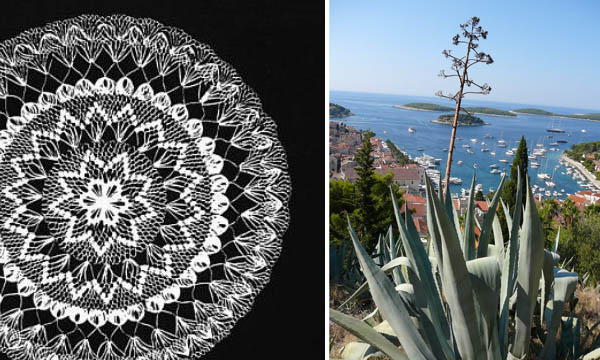
Although Hvar monastery is youngest among eight existing women’s monasteries on our coast, it boasts an extremely valuable cultural and sacral heritage. Its facilities also include “Hanibal Lucić” museum founded in 1986, whose lineup consists of carefully selected sacral art and objects. Among valuable paintings there are The Adoration of the Magi from the 15th/16th century, painted in tempera on wood, and the The Assumption of Mary from the 18th century (oil on copper). The collection also contains polychrome
wooden sculptures of saints from the 17th and 18th century, liturgical vessels made of silver, various reliquaries, valuable items made of silk and Mass vestments.
A TRUE QUEEN OF ISLAND’S ROCKS
However, in addition to these undeniably precious objects, there is one jealously guarded under the glass, which attracts particular attention. It’s a unique agave lace!Its manufacture is a rather laborious task - the nuns must use special gloves to prevent swelling and itching of hands, and work with carefully prepared agave threads in humid weather because cold dry air makes them brittle.
Because of its beauty, agave lace was already in 19th century known outside Hvar. Nowadays it is a decent autochtonous gift for any occasion - in particular formal ones. For example, the Agave lace was given to Pope John Paul II, and the Coat of Arms of Pope made from agave threads was donated to Pope Benedict. President Ivo Josipovic gave the Hvar lace to Pope Francis.
One of the most beautiful design - boutique hotel in the world
LA PURIFICADORA MEXICO
Innovative Mexican hotelier Carlos Couturier’s latest project is an inland wonder, a former 19th-century water-purifying centre next to the Iglesia de San Francisco in the colonial city of Puebla.

Purity is the guiding principle of the hotel’s design as executed by renowned architects Ricardo Legorreta and his son Victor: black and white are the only colours, bringing out the subtleties of the materials used – stone from the original building, old wood, onyx and custom floor tile, as well as found materials such as bottles and glass fragments, which are also integrated in the hotel’s graphic design.

But this minimalism shouldn’t be confused with lack of luxury: a roof terrace and 30-metre pool provide ample recreational opportunity, and the 26 guestrooms offer spectacular views of the city, a UNESCO World Heritage Site.
A ground-floor restaurant, patio, library and extensive wine cellar offer civilized diversions, but La Purificadora's real achievement is in its mix of tradition and contemporary flavour, giving Puebla a hotel to savour on the road from Mexico City to Oaxaca.
La Purificadora is located in the historic centre of Puebla, a colonial city on the road between Mexico City and Oaxaca.
Dalmatia culture attractions - what a beauty!
CULTURAL TOURISM OF DALMATIA
 Šibenik, Foto: Tz grada Šibenika
Šibenik, Foto: Tz grada Šibenika
Dalmatian region abounds with exceptional cultural heritage, for years hidden in the rubble, or with the lack of promotion for tourists, but more recently the fact that we live in cities under UNESCO protection is increasingly appreciated. Other than just sightseeing "of stone blocks", more and more we offer various manifestations of returning to the past, restoring of customs and presenting Mediterranean as it once was.
When you have so many cities under UNESCO protection on such a small area, royal and ancient towns, then you can only say - what a beauty! Reliefs that history wrote on the face of Dalmatia cannot be found anywhere else in the world.
If we start from the end part of Dalmatia - South, we will immediately begin the story about world's pearl, the city of irreplaceable beauty-Dubrovnik! Doge's Palace, the central town square of Stradun, churches and monasteries from all ages, Dubrovnik Summer Festival, Libertas film festival, lectures on inventions of a skilled scientist Ruđer Bošković, and the feast of the city patron – St. Blaise…there are so much reasons why you should include Dubrovnik in your travel itinerary.
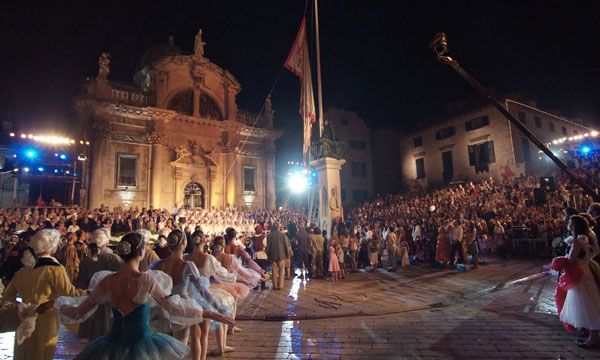
Dubrovnik, Foto: Tz Grada Dubrovnika
The journey continues towards the north, so we come to the peninsula of Pelješac, characterized by nice salt pans, and on the southern slopes by vineyards. The result is a quality wine, with a global pedigree. You can climb and see the little Great Wall of China, as residents fondly call the fortress which protected them from the Turks.
We continue our walk along the last delta in Europe, the Neretva Delta, where you have to visit Narona, an ancient city and the former trade center, which is proud of the only museum in the country to be constructed on the ruins of the city, with many preserved monuments and statues of the time.
The following are the pearls of Croatian tourism - Makarska Riviera, where you will be astonished by the beauty of sandy beaches framed by pine trees, but you also have the opportunity to practice religious tourism through the sanctuary in Vepric.

Narona, Foto Tz grada Metkovića
Richness of the natural environment provided by the Adriatic coast, is very much visible in the pirate city of Omiš, where mountain blocks leaned over the mouth of the river Cetina making a combination of beauty and supremacy of nature that are nevertheless at all times tamed by human hand.
Split will instantly win you over, with its Diocletian's Palace which is older than 1700 years. The bell tower of St. Duje, the Church of St. Francis, the Prokurative Town Square, are bound together by a new Riva like in a lacework, crowned by the Marjan Hill on the west. It is a city under UNESCO protection, and near its very center there is Bačvice beach that for the past decade flutters the Blue Flag.
At the very exit of the Diocletian's city you will be greeted by Salona, the Greek-Illyrian settlement which grew over the years and was also a bishop’s residence. And over this ancient city there is a Klis fortress, a monument to brave days of the struggle against the Turks.
Drive to the west takes you through Trogir, another stone town under UNESCO protection. The more fact that these are on the list of World Heritage Sites, is enough invitation.
Šibenik has stories of its own. It will welcome you by its rampart and St. Nicholas Church. It will thrill you with its narrow streets, churches from all periods, and you will be able to participate in the Festival of the Child, an event that brings together children from around the world for nearly half a century.
Zadar is at the very end of our journey. Church of St. Donatus is a "dot to the i," of one history, while organ of Zadar, which makes sound in the rhythm of sea currents, is associated to the modern era.
Unfortunately, this is not enough space to describe the remarkable beauty created by nature, history, and diligent hands of Dalmatians.
Green hotels - whole year business
Interview: Mladenka Dabac, licenced architect, mag.ing.aedif.DWB
Karlsruhe/Zagreb
What is green tourism and what are green hotels?
In context of global and sustainable development green tourism ( i.e. sustainable or responsible tourism) is a new way of thinking, designing and working in tourism in this millennium.
Sustainable development, on all levels of society and economy, generally means the total of procedures by which compatibility of living, management and nature and its surrounding is accomplished. The starting point and the goal of green tourism is a destination which generates determinants and specificities of green tourism, together with its elements, i.e. green hotels or green tourist settlements. By uniting + green concept of Germany and Croatia since 2003, with interdisciplinary networking of experts-specialists, our green group has generated complete solutions for complex projects. The main focuses of these projects are: sustainable development, sustainable architecture, green innovations and green tourism. Synergy of green tourism and Croatian agriculture is creating a new brand, raises it on a new level of whole-year management, which means a new rouse for Croatian economy.
How to project, build and furnish a green hotel?
It is necessary to determine (by means of complete green projecting) all basic, input and newly defined data (for ex. the use of OIE in tourism; research of new, selective forms of tourism; object destination etc.) that in networked, interdisciplinary management result in sustainable green hotel (hotel facilities and its environment) in which reserves for mid-term and long-term sustainable development are included. The basis of green projecting is first-rate, interdisciplinary knowledge and experience, implementation of new knowledge and technologies, tested in EU experience and practice.
Name one good example of this practice in world and Croatia?
First null-energetic hotel built by the EU 2-20-20 guidelines is Stadthalle Wien (since 2009). In Croatia, within the +green group we have acquired energetic independence of Hotel Sv. Križ in Trogir by introducing solar energy system (since July 2011).
What are the benefits for hotels if they become green?
Not only will green hotels, according to EU regulations, have to become null-energetic by 2020, but with the advantages and savings of green hotels one of top goals of green tourism will also be accomplished – whole-year business.
What kinds of guests visit green hotels?
Guests who visit green hotels are environment-aware. The number of these guests is in exponential rise, since it is a key feature of new tourist and tourism profile in new millennium.
Does Croatia have potential to become distinguishing brand of green tourism?
Exactly by creating recognizable brand of green tourism Croatia affirms one of its basic, national potentials.
What are the possibilities for developing green tourism on islands?
Croatia has numerous possibilities for development of green tourism on islands; they are, together with continental Croatia, a reservoir of sustainable development of the country.
[nivo effect="fade" directionNav="button" controlNav="true" width="720 px" height="360 px"]
[image]http://hotspots.net.hr/wp-content/uploads/2013/03/BALISSAE.jpg[/image]
[image]http://hotspots.net.hr/wp-content/uploads/2013/03/dabac_mladenka.jpg[/image]
[/nivo]
Interior - wellness’ key factor
Wellness tourism is not a mere definition of yet another tourist branch which grows and asserts itself as an imperative due to the Croatia’s desire to become the destination for modern aware tourists of better payment ability. Wellness tourism is not health-related tourism.
That is not only a pool, a sauna and a massage, expensive creams and a few smiles. For those who deal with interior, wellness offer and interiors must be in synergy and have to look like this:
'Life is too important that be taken seriously.' Oscar Wilde
Health is the process, balance of mind, spirit and body. Everyday decisions shape the quality of life and health. The goal of wellness interior is to create space which makes the guest more sensitive for the important aspects of health. In modern tourism and the pace of life it has become important to integrate the values in accordance with true human needs - health and the sustainability, and to promote, in a contemporary way, autochthonous values, materials and principles of formation.
"Health is a condition of complete physical, mental (psychological) and the social prosperity, and not just the absence of illness and weakness.”
(Constitution of World Health Organization,1946)
According to these quotations, when decorating interior of wellness centres or hotel rooms, basic principle of designing must be transformation of routine into rhythm.
The aim is to present the indigenousness which different users will recognise as their own true needs through the tradition and healing factors. Interior of wellness centre or guest rooms is a return to biorhythm and it reflects itself in the effort to approach health through the ambiance. Space must be divided into chapters to teach you and your guest about the cycle.
Entrance is the initiation, the key part of every story which changes the guest's perception of interior. On the very entrance the guest leaves cares and habits, routine stops, rhythm begins. This way the guests recognise the intricacy in the interior, through the light and sparkling of individual parts the trust is built, and the eternally present in the man wakes up – the curiosity.
Sleeping is the regeneration of organism where safety, comfort and the isolation are necessary. Deep sleep is filled with cleanness and the softness of bed and linen, scents, touches... Did you succeed in illustrating anything from this to your guests so they could really sense the wellness?
Hygiene reflects through the graduation of the interior intimate zones – the guest needs to be offered the distinctiveness of the following terms: wet – dry, smooth – coarse. To include healing factors through baths, make the space more intimate through the furniture.
Rest is contemplation, condition in which body rests, and the mind expands. When we are left with contemplation and the imagination, through the introspection and the meditation weightless feeling is achieved. Body feels the easiness and relaxing – true wellness spaces have the possibility of atmosphere adjustment.
Settlement means occupying the space, and even personalizing it. One needs to become familiar with space and adjust to it through the intuitiveness, flexibility and the modularity – imagine a room, hall… the ambiance like that.
Active holiday through the game and the interaction is the information exchange, trace in the area and the research. It is necessary to familiarise the guests with symbols which allow the game and the awakening of senses. It is necessary to soften the border of the interior and the exterior.
When designing wellness interior the concept story needs to be used. Stories and fairy tales have, from ancient times, served for dynamization and empowerment of our mind. Story about health is told through spatial chapters or zones which mutually intertwine. When entering the room wellness guest leaves everyday cares and habits outside and the process of healing and balancing starts. Herein one of the most important factors is – the interior.
Ivan Meštrović - artist admired all over the world
A country of only 4 million people, keeps a collection of works of world's most famous sculptor. Your arrival to Split should definitely include a visit to Meštrović Gallery, and Meštrović’s Crikvine – Kaštilac.
The all-time artist, as many describe Ivan Meštrović, was born in 1883 in Vrpolje. He spent his childhood in Otavice, Dalmatian hinterland village which is now proud of his family tomb.
His apprenticeship began in Split in the stonemason's workshop of Harold Bilinić, followed by a five-year study at the Vienna Academy of Fine Arts. He was a versatile artist: sculptor, author of several architectural and literary works, participant in important political events. By exhibiting with the Vienna Secession artistic group in the period from 1903 to 1910, the young Meštrović gained full recognition, and most of his early works are of symbolic nature - Fountain of Life in Zagreb (1905).
However, it was always said that one cannot be formed as an artist, if he or she is not living and working in Paris. Meštrović settles in the French capital in 1908 where he rents an atelier in Montparnasse. There he creates his epic works, as myth and symbol were not only part of national, but also of European, especially Secessional spiritual climate. Such works were exhibited in 1910 in Vienna and Zagreb, and have caused considerable interest in the world exhibition in Rome, where he received the first prize in the category of sculpture. In the same event Gustav Klimt was awarded, for painting.
Construction of the tomb chapel of the Račić family in Cavtat (1920 - 1923) is just the beginning of his fruitful work - he moves to Zagreb, where he adapts a house (1921 - 1924) and builds a studio. Today it is the Meštrović Atelier, a memorial setting with a permanent exhibition of the artist's works.
The works from the third decade are marked by his expressive classical design, particularly of female acts. With full intensity he works on the public monuments as well, including those outside Croatia. So the city of Chicago commissioned Meštrović to produce a monument to the Indians - two equestrian sculptures set in the Central Grant Park in 1928 are still there.
In 1938 he realizes yet another construction project: The Chamber of Fine Arts in Zagreb. This circular building is an inevitable piece of Croatian modern architecture on which Meštrović was first to apply the circular flow of the tour of the exhibits. He connected the ground and the first floor with a ramp, and lit the space by a natural light. The idea of such character of space was used twenty years later in much larger dimensions, by the famous architect Frank Lloyd Wright who built Gugennheim Museum in New York.
In the United States he dedicated himself to pedagogical work at the University of Syracuse, New York; and then at the University of Notre Dame in South Bend, Indiana. In 1954 he became an American citizen, and since 1960 a member of the American Academy of Arts and Literature. In the United States he completes a cycle of wooden reliefs, which he started almost forty years ago, on the subject of Jesus from Nazareth. He gives away this particular unit, which is considered a masterpiece of sacred art of the 20th century, for a display in the chapel of St. Cross on Crikvine - Kaštilac in Split.
It has to be singled out that Ivan Meštrović donated to the Croatian people the majority of his works - among other things, the Church of The Holy Redeemer in Otavice where he was buried, according to his own wishes. On the basis of a Contract of donation, the Ivan Meštrović foundation was established in Zagreb in 1991, and the Croatian Parliament adopts the Law on Ivan Meštrović Museums in 2007.
Photo: Muzeji Ivana Meštrovića
Exhibition Piri Reis
Cartographer in the service of Suleiman the Magnificent
15 November - 31 December 2013
Dubrovnik, Rupe Ethnographic Museum
On the occasion of the 500th anniversary of the publication of the world map by cartographer Piri Reis (1513), UNESCO has declared 2013 the Year of Piri Reis. For this occasion, exhibitions were organized in Rijeka, Poreč, and Zagreb, and now you can visit this exhibition in Dubrovnik, where you can see the most important works of this famous cartographer who lived during the reign of Suleiman the Magnificent.
The aforementioned exhibitions are a part of the series of international events organized by the Turkish Ministry of Culture and Tourism, and Croatia was chosen as a host for these exhibitions because there are many maps that indicate Croatian cities and islands in Piri’s famous book entitled Kitab-ı Bahriye (Book of Navigation), which was written in 1521 and is comprised of maps and notes that are organized in 210 chapters.Many exhibits will be displayed, such as a replica of a portolan chart showing Eastern Adriatic ports from the Book of Navigation; a replica of the world map from 1513 (which is one of the oldest preserved maps showing America); depictions of Adriatic ports produced on famous iznik ceramics (a technique of decorating ceramics that was very popular during the reign of Suleiman the Magnificent); navigation instruments dating back to the 16th century; and various portraits and other works of exquisite historical and artistic value. The authors of this exhibition are Ali Riza Işipek from the Turkish Foundation for Underwater Archaeology and Tea Perinčić from Maritime and History Museum of the Croatian Littoral in Rijeka, Croatia.
[nivo effect="fade" directionNav="button" controlNav="true" width="600px" height="360px"]
[image]http://hotspots.net.hr/wp-content/uploads/2013/11/1384336221fotoL234.jpg[/image]
[/nivo]
Read more: www.dubrovnik.hr
Maria Theresa wore Pag lace
[nivo effect="fade" directionNav="button" controlNav="true" width="600px" height="360px"]
[image]http://hotspots.net.hr/wp-content/uploads/2013/11/P3030073.jpg[/image]
[image]http://hotspots.net.hr/wp-content/uploads/2013/11/paska-cipka.jpg[/image]
[image]http://hotspots.net.hr/wp-content/uploads/2013/11/paška-čipka.jpg[/image]
[/nivo]
Pag lace is a unique handicraft made by valuable and skilled hands of woman from Pag. It is believed that the Pag lace takes its origin from the city of Mycenae. In the town of Pag making lace began in the late 15th century for the church liturgical vestments. Making lace was initiated by the Benedictine convent that had a school of lace. Lace collection that Benedictine nuns kept and collected more than 150 years, the Ministry of Culture declared the Croatian cultural heritage. History remembers the time when women from Pag went to the court of Maria Theresa to make lace for her.
Eventually, lace has become an independent decorative item, decoration for furniture, framed on the walls, carved or sewn into clothing, decoration sheets, pillows, curtains, tablecloths and as decoration on church vestments.
Uniqueness of Pag lace is that there are no templates or blueprints for making lace, the way of making and sampling has been carried forward from generation to generation by word of mouth and practical work.
Word of its beauty and perfection was wide-spread, its production and expansion in world trade boosts after the founding of Lace School in Pag. The school was founded in 1906 and has continuously worked until 1945.
In order to prevent the extinction of Pag lace making, in 1994 at the high school "Bartul Kašić" was organized training for the profession of Pag lace maker.
With school, an important role in the preservation of Pag lace has The Pag Lace Association "Frane Budak."
Nowadays, the Pag lace makers can be seen on the streets making the most beautiful needlework created by woman's hands.
In the city center on the Square Petar Krešimir IV is placed Pag lace Gallery.
He appeared from a legend
TALES FROM RIJEKA
Besides being written in the history and tradition of our ancestors and the skilful goldsmith’s hands, it is also a symbol spreading positive energy as it brings optimism and it is precisely his closeness that guarantees our wishes coming true, our serenity, protection from our enemies and from all evil forces. The Morčić earring was once worn by men too, especially fishermen and their only sons. It is not odd to see it in a man’s ear today nor is it abnormal to find brooches, bracelets, rings and pins in the treasure boxes of every older Rijeka family. Due to its attractiveness and historical importance, the Morčić has achieved enviable world fame acquiring a tourist flyer that describes the importance of this famous symbol in 30 languages.
Numerous stories have been told about the Morčić’s origins, numerous popular songs and legends have been sung amongst which there are two of the most famous ones. The first one is the legend of Zrinski described by the famous Rijeka archaeologist and art historian, Radmila Matejčić. It dates back to 16th century when the Ottomans set up camp in the Grobnik Field, threatening to attack Rijeka. The nobleman, Zrinski, shot an arrow from Gradina (Castle) close to Jelenje that hit the Ottoman pasha in his temple causing the army to run away. During this period of Ottoman occupation, the people of Rijeka, so Matejčić says, looked to the sky and prayed to God to throw stones and kill all the Ottomans. This is exactly what happened when they tried to run away: stones covered the Ottomans up to their necks and in a field only their turbans remained. In memory of this event, Rijeka’s men put earrings of a man with turban in their wives’ ears.
The second legend originates from Pelješac and says that an Italian countess had a black slave who she really liked. She gave her freedom and to remind her of the girl she ordered the creation of earrings depicting her. Morčić’s creation was largely influenced by Venice which, in 17th and 18th centuries, was obsessed with the Orient. Besides eastern spices, perfumes, fabrics, clothes and jewellery, the rich Venetian patricians started to use pages and servants in their chambers – Afro Americans wearing eastern clothes. This inspired numerous Venetian goldsmiths to begin creating decorative pins in the form of a black man with a turban, a golden bust, richly decorated with precious stones, known as a "moretto".
[nivo effect="fade" directionNav="button" controlNav="true" width="600px" height="360px"]
[image]http://hotspots.net.hr/wp-content/uploads/2013/11/Morčići-mala.jpg[/image]
[/nivo]
Foto i tekst: www.visitrijeka.eu
Dalmatia in my suitcase
What should be in every tourist’s bag on his way home? A grain of salt, a drop of lavender... a piece of dessert should certainly not be forgotten... On Pag lamb must be tried, same as you should not forget to bring back with you a piece of famous Pag’s cheese. There is also famous Pag’s lace made of firm thread according to the tradition which is transferred to younger generations by older lace makers. In every bag there should also be paški biškoti, delicious biscuits which are made for over 300 years by nuns in Benedictine monastery.
In Zadar, Museum of Antique Glass is a must see. There you can buy interesting dishes, bottles, glasses and jugs made in a fusion technique. It would be unforgivable not to taste famous sweet liqueur Maraskino, made of cherries that are grown in the city area. It is made by the recipe discovered by Dominican monks at the beginning of the 16th century. Ground coral from Zlarin is a summer must have jewellery for every woman. Therefore, when on this island, invest in buying these eternally modern coral earrings, rings or bracelets.
In Skradin, in front of the very entrance to National Park Krka, in one of the lovely cafes, try famous Skradin cake, or as the locals call it – natural viagra.
Pag’s lace makers While walking on Pag during summer months you will encounter ladies who make lace in front of their homes. Empress Marija Terezija also liked Pag’s lace and she had
her personal lace maker brought from the island.
Casanova drove his strength from Maraskino. The list of famous people who enjoyed Maraskino is a rather long one. Famous Napoleon enjoyed it, European emperors and kings adored it, English Queen Victoria, Casanova, Alfred Hichcock...
UNESCO’s city of Trogir offers rafioli, traditional dessert which you have to order in advance, you can do that in Tourist Association biro. Split has an ace up its sleeve as well – Nadalina – one of the most famous chocolatier where you can find, together with all sorts of spices, chocolates with dry figs, prošek, almonds, carob, lavender, cinnamon, red pepper, olive oil or honey. Pučišća on Brač offer souvenirs from highly appreciated Brač stone which can be found in Masonry School. It would be also a good idea to stop by Dol where you can enjoy hrapaćuša cake, which has to be ordered in advance with one of the local housewives.
[nivo effect="fade" directionNav="button" width="600px" height="360px"]
[image]http://hotspots.net.hr/wp-content/uploads/2013/11/skradinska-torta.jpg[/image]
[image]http://hotspots.net.hr/wp-content/uploads/2013/11/skradin_7.jpg[/image]
[/nivo]
Hvar has its hidden treasures; apart from famous wines and oil, there is also soft lace made from the thin agave leaves by Benedictine nuns. Not far from the monastery, on Hvar’s waterfront, stop by one of the numerous stands and buy a spray of therapeutic lavender, scented pack or lavender oil, so you can be reminded for a long time of the beauty of the Dalmatian island of sun. Imotski, apart from the visits to karst phenomena Blue and Red Lake, offers famous dessert known as Imotski cake, a dry cake which you can also put in your bag. Dubrovnik has its small treasures as well, like broštulani menduli (almonds in caramel) or orange peel in sugar which can be found in small packages in some of the numerous souvenir shops.
Sweet Korčula cherishes one popular location where numerous tourists wait in lines during the summer - Cukarin pastry shop- where you have to try cakes called klašun, amareto, Marko Polo bombica, harubica or broštulane mindole.
Croatian products – 6 views on the room
Tourism trends are changing, and the project “Six views of the room” enables the tourism sector to adopt this change more easily. The designers came up with, and reputable local manufacturers have produced, six different types of hotel rooms for the new tourism in Croatia.
In the creation of hotel rooms price range is recognized as an opportunity rather than limitation, and thus solved the eternal prejudice that the design must necessarily have a high price. In six categories, there are six price classes – from the lowest, but the broadest category of apartment furniture, to the rooms for elite guests who are looking for a new luxury.
Croatian interiors are joint producers of furniture and equipment that offer a complete service of designing and furnishing your space. Here in a single place you can find many different providers of complete equipment for interior decoration. In this way we save your time, but also facilitate the choice.
We invite you to contact us with complete confidence in our competence, so that together we can reach the realization of the idea that hotels and other accommodation facilities reflect a strategy also by their interiors.
Hrvatski interijeri d.o.o.
Pavla Hatza 12,
10 000 Zagreb
t: +385 1 6238 050
f: +385 1 6265 262
m: +385 91 5579 723
[email protected]
www.hrvatskiinterijeri.hr
[nivo effect="fade" directionNav="disable" width="620 px" height="360px"]
[image]http://hotspots.net.hr/wp-content/uploads/2013/09/04abab.jpg[/image]
[image]http://hotspots.net.hr/wp-content/uploads/2013/09/04aba.jpg[/image]
[image]http://hotspots.net.hr/wp-content/uploads/2013/09/04ab.jpg[/image]
[image]http://hotspots.net.hr/wp-content/uploads/2013/09/02a.jpg[/image]
[/nivo]

